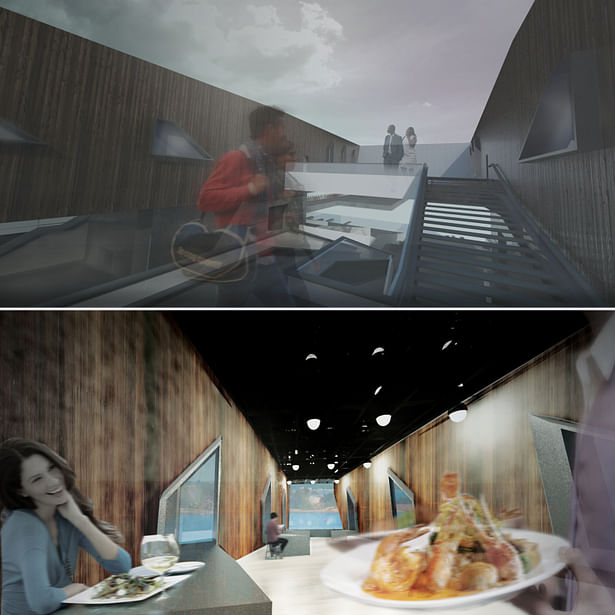

The footprint of New Bedford State Pier has been remade many times in different configurations. In 2013 the City of New Bedford commissioned Bourne Engineering to produce a civil engineering report for the site. The report pointed out significant degradation of the pier structure especially concentrated to the north where foundations date back almost a century. Bourne recommended that the City re-invest in a new foundational infrastructure for the State Pier, but so far this recommendation has not been seriously considered by the city.
A Pier Again bases a design of a new State Pier on the already forgotten warnings of the Bourne report. It provokes a maximal spatial transformation of the State Pier constructed from a strategic re-use of the existing materials that make up the pier. The project essentially views the existing site itself as a set of tools for architecture.
My intuition after visiting the site - and recognizing its proximity to the water and to downtown New Bedford - was to propose a public threshold between city and harbor. This threshold combines two architectural typologies – the arena and the depot.
The Depot houses the public fish market, provides a face to the city and maintains a view corridor down Union Street. The Arena provides an outdoor public space at the water and houses the fishing processing facilities. The Arena canopy is volumetric, containing iconic seafood restaurants that cantilever over the arena with high, uninterrupted views across the waterfront.
Producing a structural cantilever at a civic scale is challenging in the context of a carbon argument. But given that a new State Pier represents a significant initial carbon investment, I tried to understand and define fundamental questions of resources such as: What is a resource? How much energy exists already at the state pier? Can the foundations of the pier be re-used and reconfigured? And how do we make best use of what remains?
This project responds to these questions by understanding the excavation of the site as a potential source of construction material. The project takes an account of excavated materials, leaves some behind for a new park edge, and makes use heavy steel girders and w-16 elements in the existing warehouse to construct the three spatial volumes that make up the cantilevered roof.
Status: School Project
Location: New Bedford, MA, US
Additional Credits: MIT M-Arch Core 3
Professor: Sheila Kennedy